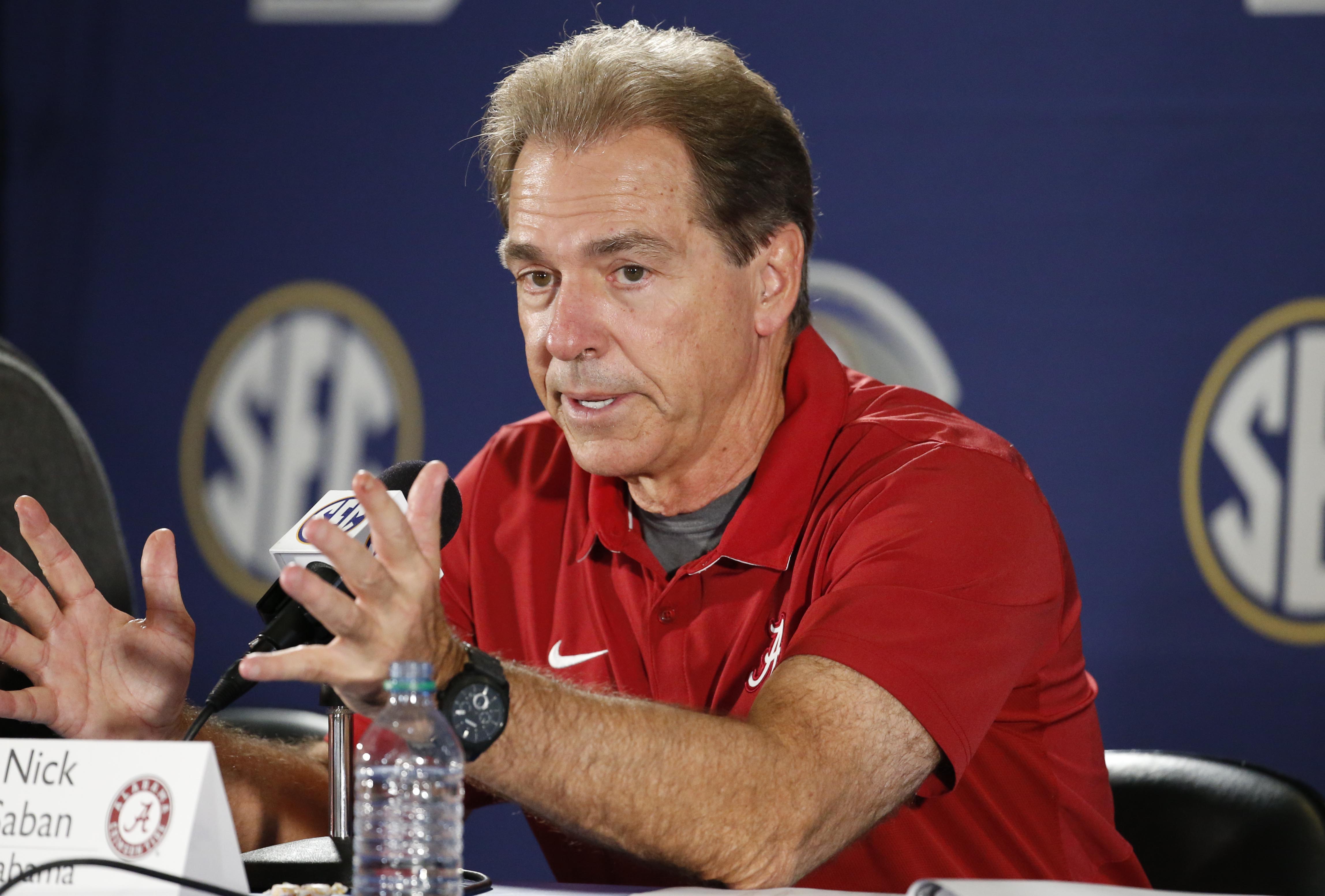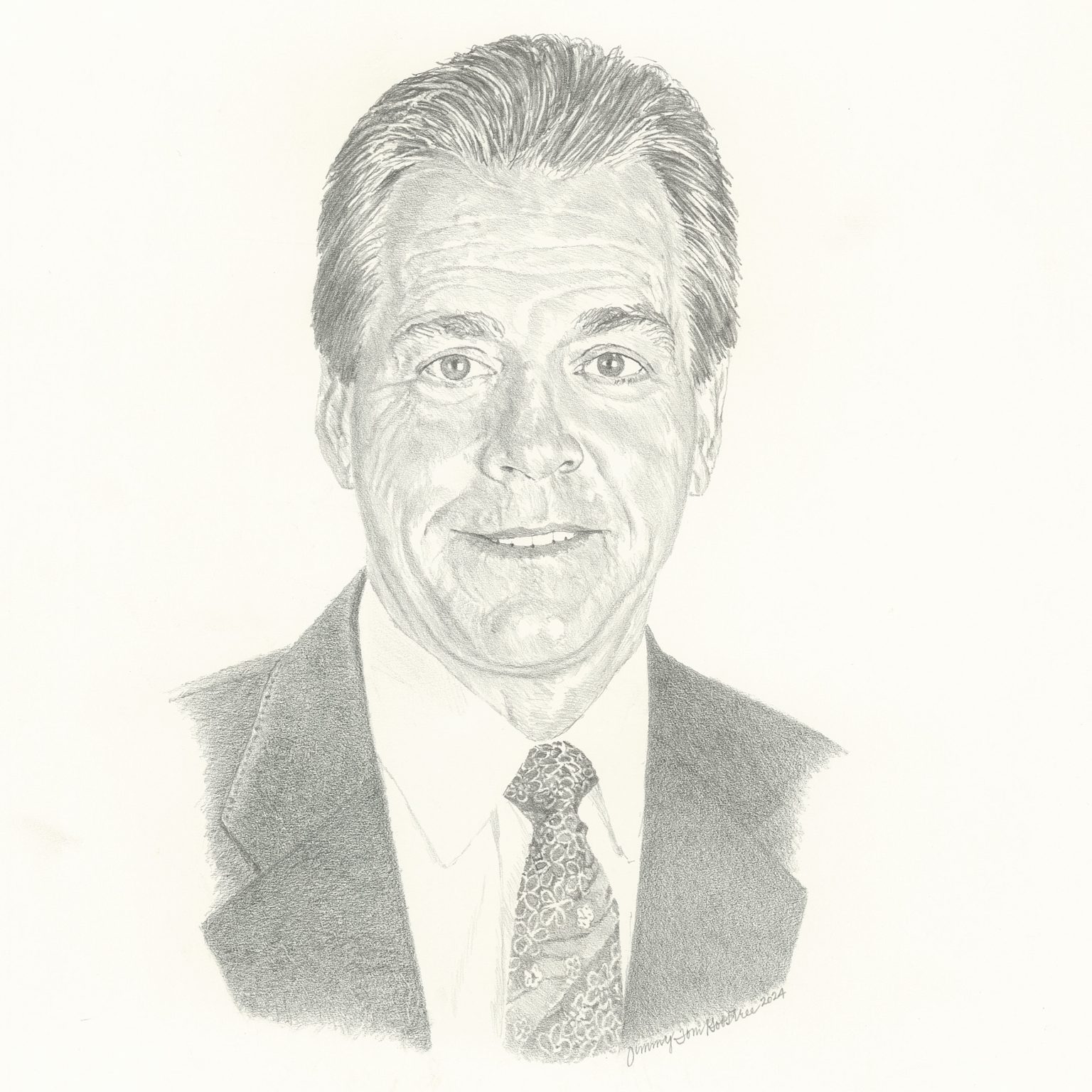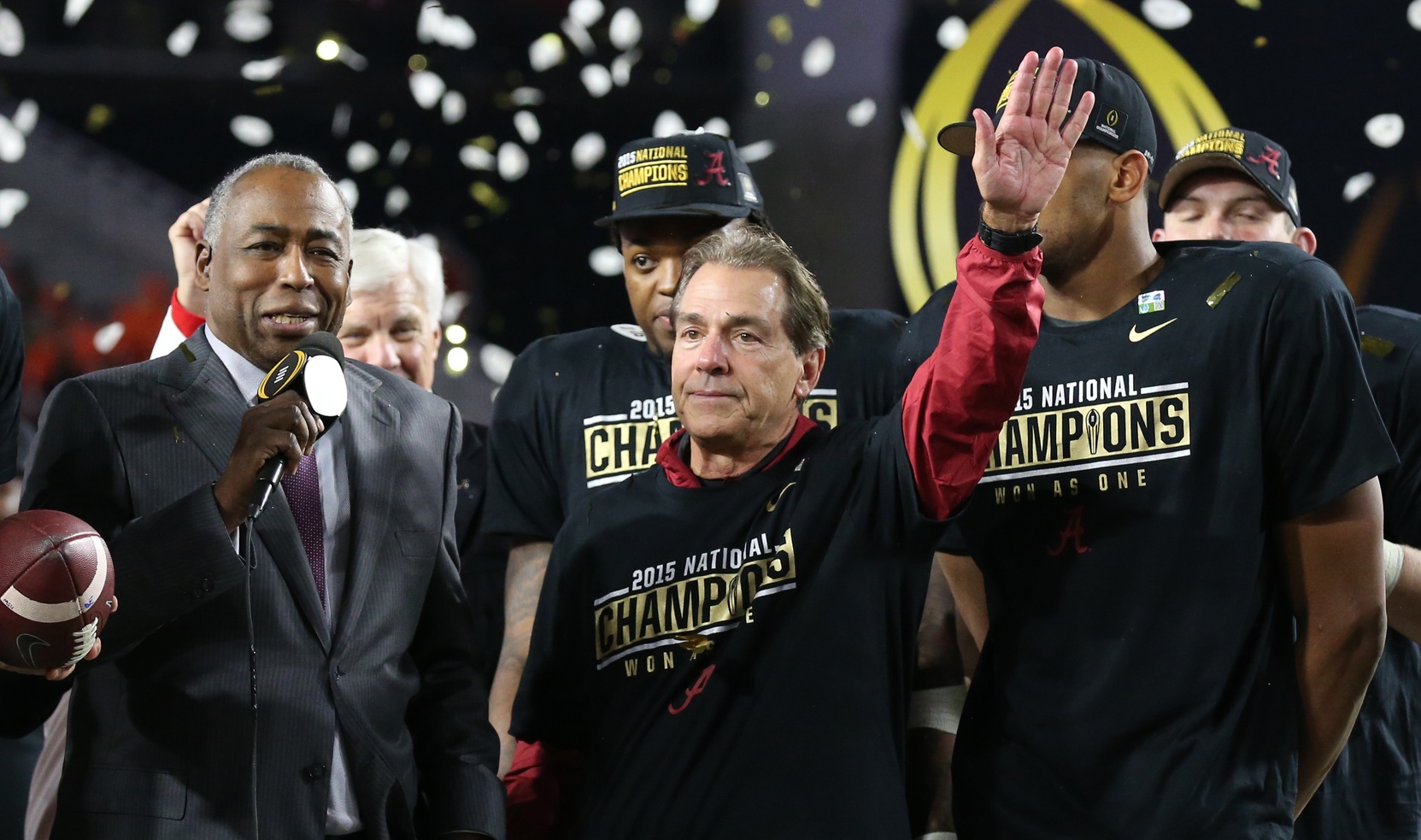Nick Saban The Blind Side: Unveiling A Legacy Of Impact
In the annals of American football, few names command as much reverence and respect as Nick Saban. His unparalleled success as a head coach, particularly at the University of Alabama, has etched his name into the very bedrock of the sport. Yet, beyond the championships and the wins, lies a deeper narrative—one that, for many, subtly echoes the profound themes explored in the iconic story of "The Blind Side." This article delves into the fascinating intersection of Nick Saban's coaching philosophy and the real-life lessons of mentorship, transformation, and unwavering belief that define the essence of "The Blind Side," exploring how Saban's approach to developing players, both on and off the field, aligns with the spirit of the beloved narrative.
The story of Michael Oher, brought to life in Michael Lewis's book and the subsequent blockbuster film "The Blind Side," is a powerful testament to the impact of a supportive environment and the transformative power of a family's belief. While Nick Saban was not directly involved in Michael Oher's journey to the NFL, the principles of nurturing talent, building character, and creating a structured pathway to success are hallmarks of his coaching career. This exploration will draw parallels between Saban's meticulous program building and the life-changing support depicted in "The Blind Side," revealing why the phrase "Nick Saban The Blind Side" resonates with those who understand the true depth of his influence.
Table of Contents
- The Enduring Legacy of Nick Saban
- "The Blind Side": A Cultural Phenomenon
- The Intersection: Saban, Tuohy, and the Oher Narrative
- Leadership, Mentorship, and Development: Saban's Philosophy
- Beyond the Field: Saban's Impact on Player Lives
- The "Blind Side" in Football Strategy: A Coaching Parallel
- The Enduring Narrative: Why "Nick Saban The Blind Side" Resonates
- Lessons in Life and Football from Nick Saban
The Enduring Legacy of Nick Saban
Nick Saban's name is synonymous with excellence in college football. His coaching career, spanning decades, is marked by an unprecedented level of sustained success, particularly during his tenure as head coach of the Alabama Crimson Tide. From 2007 to 2023, Saban transformed Alabama into a perennial powerhouse, securing six national championships and solidifying his status as arguably the greatest college football coach of all time. His approach is often described as process-driven, focusing on meticulous preparation, fundamental execution, and relentless discipline. This unwavering commitment to "The Process" has not only yielded countless victories but has also shaped the lives of hundreds of young men who passed through his program.
A Biographical Sketch
Born in Fairmont, West Virginia, in 1951, Nick Saban's journey to coaching greatness began modestly. He played defensive back at Kent State University, where he was a teammate of future NFL coach Don James. After a brief stint in professional football, Saban transitioned to coaching, starting as a graduate assistant at Kent State in 1973. His early career saw him move through various assistant coaching roles at schools like Syracuse, West Virginia, Ohio State, and Michigan State, honing his craft under respected mentors. His first head coaching opportunity came with the Toledo Rockets in 1990, followed by a successful run with the NFL's Cleveland Browns as defensive coordinator under Bill Belichick. This NFL experience, particularly working with Belichick, profoundly influenced Saban's disciplined and detail-oriented philosophy. He returned to college football as head coach at Michigan State, then LSU, where he won his first national championship in 2003. A brief return to the NFL with the Miami Dolphins preceded his iconic arrival at Alabama, where his legacy truly blossomed. Saban's career is a testament to consistent learning, adaptation, and an unyielding pursuit of perfection, qualities that resonate with the transformative themes of "The Blind Side."
Personal Data and Key Milestones
Here's a snapshot of Nick Saban's career and personal details:
| Full Name | Nicholas Lou Saban Jr. |
| Born | October 31, 1951 (age 72 as of 2023) |
| Birthplace | Fairmont, West Virginia, U.S. |
| Alma Mater | Kent State University |
| Playing Position | Defensive Back |
| Head Coaching Record (College) | 292–71–1 (overall) |
| National Championships | 7 (1 with LSU, 6 with Alabama) |
| Conference Championships | 11 (2 SEC with LSU, 9 SEC with Alabama) |
| Awards & Honors | AP Coach of the Year (2003, 2008), Eddie Robinson Coach of the Year (2003), Home Depot Coach of the Year (2008), Paul "Bear" Bryant Award (2003, 2009), Bobby Dodd Coach of the Year (2014), Sporting News Coach of the Year (2015), George Munger Award (2015), Walter Camp Coach of the Year (2018) |
| NFL Coaching | Miami Dolphins Head Coach (2005-2006) |
| Philanthropy | Nick's Kids Foundation (with wife Terry) |
"The Blind Side": A Cultural Phenomenon
"The Blind Side" is more than just a sports story; it's a narrative about family, compassion, and the power of opportunity. Based on Michael Lewis's 2006 book "The Blind Side: Evolution of a Game," the film adaptation, released in 2009, brought the true story of Michael Oher to a global audience. Oher, a homeless and traumatized teenager, is taken in by Leigh Anne and Sean Tuohy, a wealthy Memphis couple. With their unwavering support, Oher excels academically and athletically, eventually becoming a first-round NFL draft pick and a Super Bowl champion offensive lineman. The movie highlights the critical role of the left tackle in football – protecting the quarterback's "blind side" – and uses this metaphor to underscore the protective and nurturing role the Tuohys played in Michael's life. The film resonated deeply with audiences for its heartwarming portrayal of overcoming adversity, the importance of family (both biological and chosen), and the profound impact one individual or family can have on another's destiny. It challenged perceptions of what constitutes a family and emphasized the human potential unlocked when given the right support system.
The Intersection: Saban, Tuohy, and the Oher Narrative
While Nick Saban and the Tuohy family operated in different spheres, the core principles driving their actions bear striking similarities. The Tuohys saw potential in Michael Oher that others overlooked and committed to providing him with the structure, resources, and emotional support he needed to thrive. This mirrors Saban's philosophy of player development. Saban is renowned for his ability to identify raw talent and then meticulously sculpt it into elite performance. He doesn't just coach football; he coaches life, emphasizing discipline, responsibility, and the importance of making good choices off the field. Both the Tuohys and Saban demonstrate a profound belief in the transformative power of a structured, supportive environment, where individuals are not just given opportunities but are also held accountable and guided towards reaching their fullest potential. The idea of "Nick Saban The Blind Side" emerges from this shared commitment to nurturing and protecting potential.
From Ole Miss to Alabama: The Recruiting Trail
Michael Oher's recruitment was a significant part of "The Blind Side" narrative, with many prominent college football programs vying for his talent. While the movie primarily focuses on his eventual commitment to Ole Miss (Leigh Anne Tuohy's alma mater), it's important to remember that top-tier coaches like Nick Saban would have been well aware of a prospect of Oher's caliber. Saban, known for his relentless and thorough recruiting, would have undoubtedly assessed Oher's potential, even if Oher's personal journey ultimately led him elsewhere. Saban's recruiting process is legendary for its depth, involving not just athletic evaluation but also character assessment. He seeks players who are not only physically gifted but also possess the mental fortitude and willingness to commit to his demanding "Process." This holistic approach to recruitment aligns with the spirit of "The Blind Side," where the focus extends beyond just athletic prowess to encompass the entire individual and their potential for growth in all aspects of life.
Leadership, Mentorship, and Development: Saban's Philosophy
Nick Saban's coaching philosophy extends far beyond Xs and Os. He is a master of mentorship, instilling in his players a sense of purpose, accountability, and the drive for continuous improvement. His "Process" is not merely a football strategy; it's a life philosophy. Players under Saban are taught to focus on the present moment, to control what they can control, and to consistently strive for incremental gains. This approach fosters resilience, mental toughness, and a strong work ethic—qualities that serve them well both on the field and in their post-football lives. Like the Tuohys providing a framework for Michael Oher's development, Saban provides a rigorous, yet ultimately rewarding, framework for his athletes. He demands excellence but also invests heavily in their personal growth, understanding that true success is holistic. This emphasis on comprehensive development is a core reason why the connection between "Nick Saban The Blind Side" feels so natural to many observers.
Beyond the Field: Saban's Impact on Player Lives
One of the less-publicized but equally profound aspects of Nick Saban's legacy is his impact on the lives of his players beyond their playing careers. Many former Alabama players credit Saban with teaching them invaluable life lessons, preparing them for success in the NFL, business, or other professions. His program emphasizes academic achievement, personal conduct, and community involvement. Through the Nick's Kids Foundation, established with his wife Terry, Saban also demonstrates a commitment to giving back, supporting children's causes and disaster relief efforts. This holistic approach to player development and community engagement mirrors the selfless dedication shown by the Tuohy family in "The Blind Side." They didn't just help Michael Oher become a football player; they helped him become a well-rounded individual with a future. Saban's program, similarly, aims to equip young men with the tools to navigate life's challenges, emphasizing character and integrity alongside athletic prowess. This commitment to the overall well-being and future success of his players underscores the "Nick Saban The Blind Side" connection.
The "Blind Side" in Football Strategy: A Coaching Parallel
The literal "blind side" in football refers to the side of the quarterback opposite their throwing arm, which they cannot see without turning their head. Protecting this vulnerable area is paramount for any successful offense, as a hit from the blind side can lead to fumbles, injuries, and game-changing turnovers. Nick Saban, as a defensive mastermind and a coach who built dominant offenses, deeply understood the strategic importance of the offensive line, particularly the left tackle protecting the quarterback's blind side. His teams consistently featured elite offensive linemen, meticulously coached and developed to execute their assignments flawlessly. This strategic emphasis on protection, both literal and figurative, draws a direct parallel to the protective role the Tuohys played in Michael Oher's life. Just as the Tuohys shielded Michael from the dangers and uncertainties of his past, Saban's offensive lines were built to shield his quarterbacks, ensuring their safety and allowing the offense to flourish. The concept of "Nick Saban The Blind Side" thus takes on a double meaning: the human element of protection and the strategic football imperative.
Cultivating Offensive Line Excellence
Under Nick Saban, the University of Alabama became a factory for elite offensive linemen. His coaching staff, under his guidance, recruited top talent and then subjected them to a rigorous development program focused on technique, strength, and cohesion. Saban understood that a dominant offensive line was the foundation of any championship team. He invested heavily in their training, emphasizing the importance of every block, every step, and every assignment. This dedication to cultivating excellence in a position that directly protects the most valuable asset (the quarterback) is a tangible manifestation of the "blind side" principle in his coaching. The linemen were not just players; they were guardians, tasked with ensuring the safety and success of the entire offensive unit. This meticulous attention to detail and unwavering commitment to fundamental excellence ensured that Saban's teams were always well-protected, much like Michael Oher found protection and stability with the Tuohys.
The Enduring Narrative: Why "Nick Saban The Blind Side" Resonates
The resonance of "Nick Saban The Blind Side" stems from the shared themes of transformation, mentorship, and the profound impact of a structured, supportive environment. Both narratives highlight how individuals, when given the right guidance and resources, can overcome immense challenges and achieve extraordinary success. Saban's "Process" is a real-world embodiment of the principles that allowed Michael Oher to thrive: discipline, accountability, consistent effort, and belief in a greater purpose. For fans and observers, seeing a coach like Saban not only win championships but also consistently develop young men into responsible adults adds another layer to his legendary status. It elevates him beyond just a football coach to a figure who profoundly shapes lives, much like the Tuohy family did for Michael. This connection underscores the idea that true greatness in leadership involves nurturing potential and providing a "blind side" of unwavering support and guidance.
Lessons in Life and Football from Nick Saban
The legacy of Nick Saban, when viewed through the lens of "The Blind Side," offers profound lessons applicable both on and off the football field. Firstly, it emphasizes the critical role of mentorship and the power of belief. Just as the Tuohys believed in Michael Oher's untapped potential, Saban consistently believed in his players, pushing them to achieve more than they thought possible. Secondly, it highlights the importance of a structured "Process." Success is rarely accidental; it's the result of consistent, disciplined effort, focusing on the fundamentals and mastering the small details. Saban's relentless adherence to his process, much like the consistent support Michael received, created an environment where excellence was not just encouraged but expected. Finally, both narratives celebrate the transformative power of opportunity and a supportive community. Whether it's a family opening their home or a coach building a world-class program, providing the right environment can unlock incredible human potential. The connection between "Nick Saban The Blind Side" is not about a direct historical link, but rather a powerful thematic resonance that speaks to the heart of what makes both stories so compelling: the unwavering commitment to nurturing, protecting, and elevating individuals to achieve their greatest selves.
What are your thoughts on the parallels between Nick Saban's coaching philosophy and the themes of "The Blind Side"? Share your insights in the comments below, or explore more articles on legendary coaches and their impact on and off the field. Your perspective adds to the rich tapestry of football's enduring stories.

How Nick Saban changed the script of the movie 'The Blind Side'

Nick Saban – The Alabama Business Hall of Fame | The University of Alabama

Nick Saban wouldn't wear LSU clothes, changed lines in 'The Blind Side'